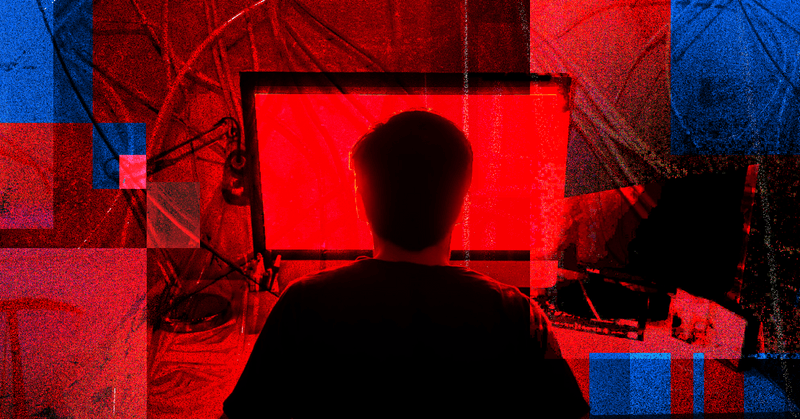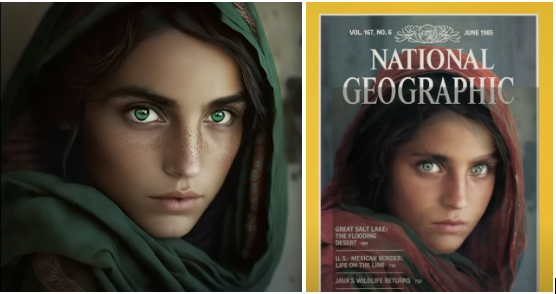Navigating the Intersection of AI, Art, and Labor Rights
Written on
Chapter 1: Understanding AI in the Creative Sphere
Recent discussions surrounding artificial intelligence (AI) have sparked diverse opinions, particularly regarding its influence on art and writing. For instance, some users on platforms like Medium express excitement about monetizing AI-generated content, with one stating, “Sure, AI art can be sold,” while others ponder how to profit from such tools. They highlight the ease with which graphics and text can be produced using free resources like MidJourney and ChatGPT.
The notion that creating quality art is simpler with AI tools is misleading; however, many believe it demands less effort than traditional artistic endeavors. This sentiment sheds light on a broader issue concerning the disruptive nature of AI in today’s economy, often framed as innovation but seen by others as an attempt to undermine skilled labor and exploit the public.
Modern AI diverges significantly from popular portrayals in movies, such as Skynet or HAL 9000. In reality, AI consists of specialized algorithms trained on extensive datasets to complete narrowly defined tasks. These programs are designed to generate specific responses or actions when they encounter typical inputs.
A critical question arises: where do these datasets originate? Contrary to the belief that they are drawn from an infinite digital repository, the truth is that they stem from human contributions—often from everyday internet users like you.
Section 1.1: The Role of CAPTCHAs in AI Development
You may have encountered CAPTCHAs (Completely Automated Public Turing tests) online, which require users to perform simple text or audio tasks to verify their humanity. A common example is Google’s reCAPTCHA, where users identify specific images or words in a grid.
While these CAPTCHAs help protect websites from bots, they also serve to refine AI datasets. They contribute to tasks ranging from improving image recognition to identifying road hazards. Users frequently notice AI-generated art appearing in their CAPTCHA tasks, highlighting a surprising link between user interaction and AI training.
Even if you don't actively use tools like MidJourney or ChatGPT, your online activities over the past two decades may have unwittingly aided their development. Have you ever been compensated for that contribution? Did you realize that your actions were feeding into the development of AI technologies?
Subsection 1.1.1: The Issue of Copyright in AI Training

It’s important to consider that the datasets used by programs like MidJourney often include copyrighted materials. For instance, vlogger Hank Green requested MidJourney to create an image of an "Afghani woman with green eyes," resulting in a strikingly similar representation to National Geographic's iconic 1980 cover. This occurrence raises concerns about plagiarism in AI training.
On the left is the image generated by MidJourney, while the right displays the original National Geographic photograph. This example illustrates AI's inclination to replicate existing content rather than generate truly original work.
Section 1.2: The Limits of AI Knowledge
The common misconception that the internet houses all human knowledge is misleading. Much information remains locked behind paywalls or is not digitized, making it challenging for data scientists and journalists to compile comprehensive datasets. AI algorithms, which aggregate existing data, do not engage in this labor and risk producing “copies” without acknowledging the original human efforts behind them.
The content generated by AI tools poses risks, as malicious users may exploit these technologies for nefarious purposes. As Gary Marcus noted in Scientific American, these systems lack mechanisms to verify the truthfulness of their outputs, leading to the potential spread of misinformation. For instance, a researcher utilized ChatGPT to fabricate studies, including false claims about vaccine efficacy, highlighting the danger of AI-generated misinformation.
Chapter 2: Examining Bias in AI Tools
The issue of systemic bias in AI technologies is another pressing concern. The AI avatar-generating application Lensa, for example, has been criticized for producing racist and sexist imagery. Writer Rebecca A. Stevens shared her experience, noting that while her white husband's images turned out well, hers were altered to appear more Eurocentric. This reflects the biases present in the algorithms and datasets that drive these applications.

People often mistakenly assume that technology is free from bias; however, human opinions and perspectives inevitably influence technological design. The biases held by programmers can manifest in the algorithms they create, resulting in outcomes that perpetuate existing societal prejudices.
To summarize, developers of AI applications like MidJourney and Lensa are utilizing labor without proper compensation or consent to train their systems. Consequently, these products are commodified into services vulnerable to exploitation and systemic bias, with the negative externalities impacting society at large.
The Future of AI in the Creative Industry
What lies ahead for tools like MidJourney? While many are currently free, they are likely to transition to a paid model. In the near term, usage fees may rise as companies seek to establish their brands. Ultimately, these applications will likely become subscription-based services aimed at reducing content production labor costs, endangering the livelihoods of visual artists.
The primary customers for these services may not be immediately apparent, but significant profits could be generated by selling them to content aggregation firms. These organizations, which own media platforms and websites, may prefer to rely on algorithms for rapid, low-cost image production instead of hiring skilled artists.
We have already witnessed similar trends in other industries. For example, Google Translate has become a widely used substitute for professional translation services, despite its imperfections. This reliance on AI has diminished the demand for skilled translators, leading to lower wages and precarious employment conditions.
The impact of AI on creative fields is evident; artists and designers will have to compete with software developed from their own past work. As AI-generated content becomes ubiquitous, workers may find themselves relegated to monotonous tasks, such as editing and prompting, at reduced wages.
Is this grim future unavoidable? Some argue that while disruptive technologies may pose short-term challenges, they will ultimately enhance living standards. However, this perspective overlooks the reality that profits derived from reduced labor are often concentrated among a select few, leaving the majority with diminishing opportunities.
The precariousness of life will not be alleviated by technological progress that remains unequal. Historically, workers have fought against capitalist exploitation through organized labor movements. The benefits enjoyed by the working class today—such as the 40-hour work week and health regulations—were not granted by technology but earned through struggle.
A collective response to the emerging challenges posed by AI will be essential. Artists and creative professionals must unite to safeguard their work against theft and exploitation. Political leaders and organizations should consider measures to protect against the misuse of AI technologies.
Mitigating the adverse effects of these advancements will require significant effort. However, failing to act could lead to a future where creative labor is reduced to a precarious gig economy, stripping artists of their rights and dignity.